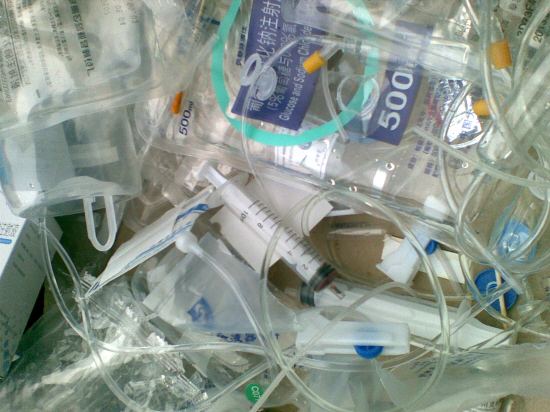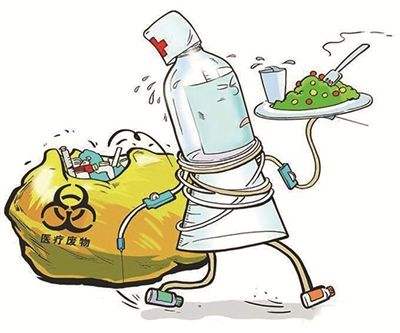Divided into five categories according to the waiting, hazardous, material and disposal methods of medical waste: Infectious waste; Damaging waste; Pathological waste; Pharmaceutical waste; Chemical waste.
Infectious waste
Characteristics: Medical wastes that carry pathogenic microorganisms are at risk of spreading infectious diseases. mainly include:
1. Items contaminated by patient’s blood, body fluids, and feces, including:
① Cotton balls, cotton swabs, drainage slivers, gauze and various other dressings;
② Disposable sanitary products, disposable medical supplies and disposable medical devices;
③ Abandoned quilts;
④ Other items contaminated by the patient’s blood, body fluids, and feces.
2. Isolation of domestic waste from infectious disease patients or suspected infectious disease patients admitted by medical institutions;
3. Pathogen’s culture medium, specimens, strains, and virus preservation solution;
4. Various abandoned medical specimens;
5. Discarded blood and serum;
6. Disposable medical supplies and disposable medical devices after use are regarded as infectious waste.

Damaged waste
Features: Discarded medical sharps that can stab or cut the human body. Mainly include:
1. Medical needles and suture needles;
2. Various types of medical sharps, including: scalpels, scalpels, skin preparation knives, surgical saws, etc .;
3. Glass slides, glass test tubes, glass ampoules, etc.
Pathological waste
Features: human waste and medical laboratory animal carcasses generated during diagnosis and treatment. Mainly include:
1. Discarded human tissues and organs generated during surgery and other diagnosis and treatment;
2. Tissues and corpses of medical experimental animals;
3. Discarded human tissue and pathological wax blocks after pathological sectioning;
4. Placenta of infectious diseases, suspected infectious diseases and infectious diseases of unexpected causes;

Pharmaceutical waste
Features: Obsolete medicines that are out of date, obsolete, deteriorated or contaminated. Mainly include:
1. Discarded generic drugs, such as antibiotics and over-the-counter drugs;
2. Discarded cytotoxic drugs and genotoxic drugs, including:
① Carcinogenic drugs, such as thiopurine, phenylbutyric acid mustard, naphthalene mustard, cyclosporine, cyclophosphamide, phenylalanine mustard, smelastine, tamoxifen, thiotepa, etc .;
② Suspected carcinogenic drugs, such as: cisplatin, mitomycin, doxorubicin, phenobarbital, etc .;
③ immunosuppressive agents.
3. Discarded vaccines, blood products, etc.
Chemical waste
Features: Waste chemicals that are toxic, corrosive, and flammable and explosive. Mainly include:
1. Discarded chemical reagents in medical imaging rooms and laboratories;
2. Discarded chemical disinfectants such as peroxyacetic acid and glutaraldehyde;
3. Discarded mercury sphygmomanometers and mercury thermometers.


